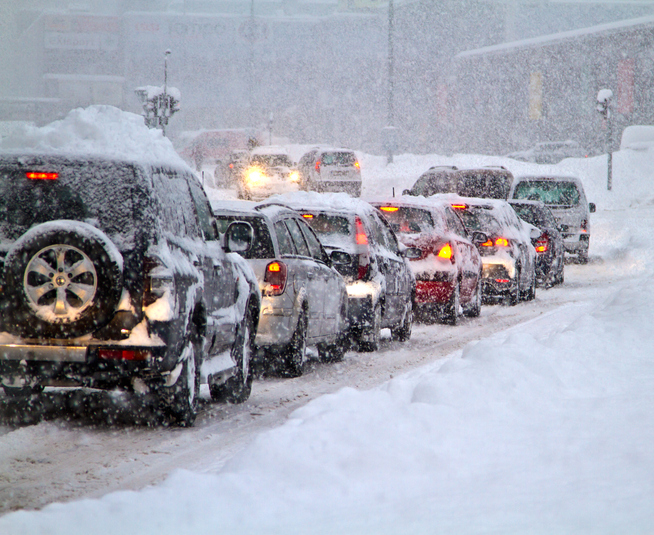5 Tips for Safe Driving as the Days Get Shorter
August 2, 2024
Gloves? Check. jacket? Check. Beanie? Check. You wouldn’t go out into the cold without being prepared, right? It’s no different from driving as the days get shorter and wetter. To stay safe on the road, you need to be prepared for changing conditions.
For example, kids go back to school in the fall, so there are more pedestrians and traffic now than there were during the summer. However, that’s just one factor to account for; fall and winter also bring fog, rain, glare, low light, and the occasional snow. Here are some tips to help you prepare for whatever winter throws our way.
Fog

Fog can greatly reduce your visibility and make it difficult to spot changing road conditions, so it’s important to slow down to give yourself more time to react. You should also give yourself extra space between your car and the vehicle in front of you. You never know when you’ll need extra braking time! Make sure other drivers can see you by using your low beams. Although it may seem like your high beams would give you better visibility, they’ll cause glare that can make it difficult to see what’s ahead of you on the road.
Rain

Following too closely in the rain is one of the surest ways to get into an accident. The first rain of the year is especially dangerous because the rainwater can pool on dust, oil and other debris that’s soaked into the asphalt, making the roads extremely slick. Be sure to give yourself an extra car length (or two) when following behind another vehicle. You’ll also want to make sure your windshield wiper blades are working well. They should clear away raindrops with a single swipe; if they’re leaving streaks or smears across your windshield or making a scraping noise, it’s time to replace them.
glare
When the sun is lower in the sky, it increases glare, especially when you’re driving east in the morning or west in the evening. Glare can make it extremely difficult to see obstacles on the road, pedestrians, bicyclists, road signs, traffic lights and even other cars. Get a good pair of sunglasses to keep in your car, and make sure to clean your windshield regularly.
Darker Days
Since it gets darker earlier in the fall and winter, you may find yourself driving in the dark or low-light conditions more than you did in the spring and summer. Darkness reduces our field of vision, depth perception, and ability to determine colors; it can also make you feel tired or sleepier than you would if you were driving during the day. Headlights from oncoming traffic can also affect your vision.
Dimming your dashboard lights can help your eyes focus better on the dark road ahead. Use your high beams only when you’re traveling through very dark areas with little visibility, and always make sure there’s no oncoming traffic or a car immediately in front of you. If you’re driving in a rural area, keep an eye out for animals that may be crossing the road. If you spot an animal, slow down as quickly (and safely) as possible; don’t swerve because this could cause you to go off the road or get into an accident.
Snow

Although we don’t get a lot of snow in Seattle, it’s always good to be prepared. The key to driving safely in the snow is to be smooth and gradual with everything you do—braking, steering, and accelerating. Jerky or abrupt movements can easily make you lose traction. As the road gets slipper, it’s important to think ahead. Slow down more in anticipation of turns and allow three times the stopping distance (or more if there’s ice on the road). If your car starts to skid, don’t panic or slam on the brakes. Look and steer at where you want to go, not where your car is going.
The Three Most Important Things to Remember
When the weather gets colder and the days get shorter, there are more factors to consider while driving. Although every circumstance we’ve listed has specific tips to help you stay safe, here are three things that will help regardless of light, weather, or other driving conditions: slow down, give other vehicles more space, and do everything you can to increase your visibility.
Even with the most cautious driving, accidents can still happen—not to mention, storms can knock down tree limbs, and other weather- or animal-related events can happen that damage the glass on your vehicle. If your windshield or windows have been damaged or they’re affecting your visibility in some way, Lucky Dog Auto Glass is here to help. We care deeply about your safety and offer a lifetime guarantee on windshield rock chip repairs and windshield replacements. Contact us today at (253) 569-9403 for a free estimate.
